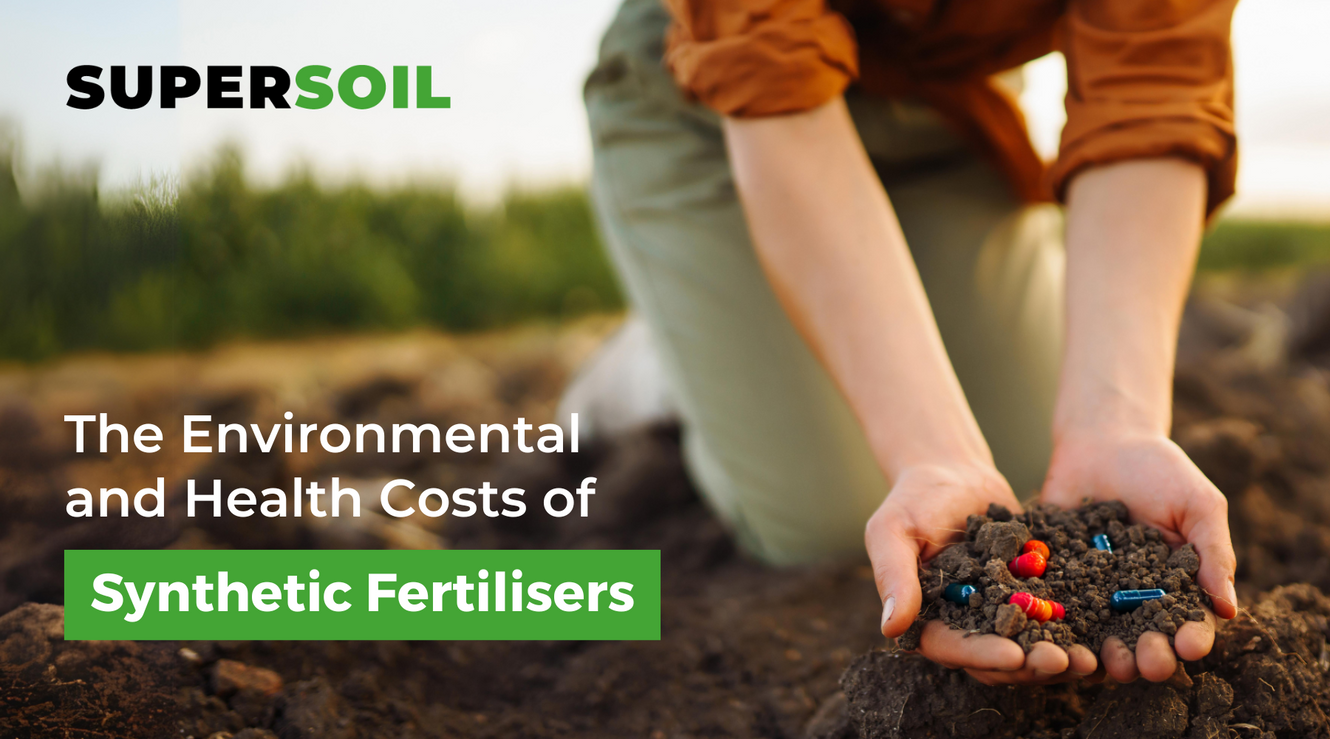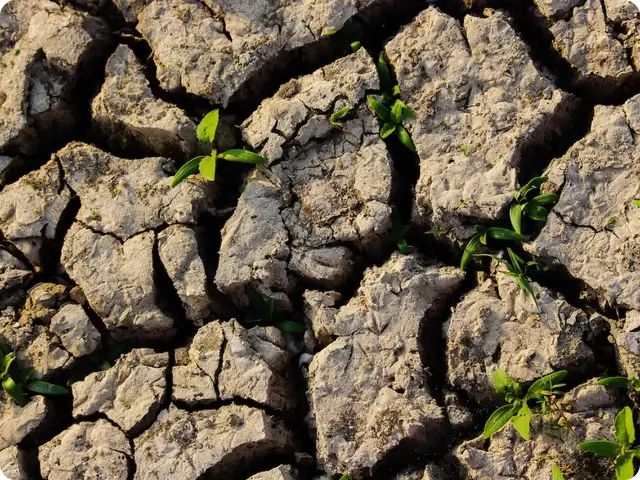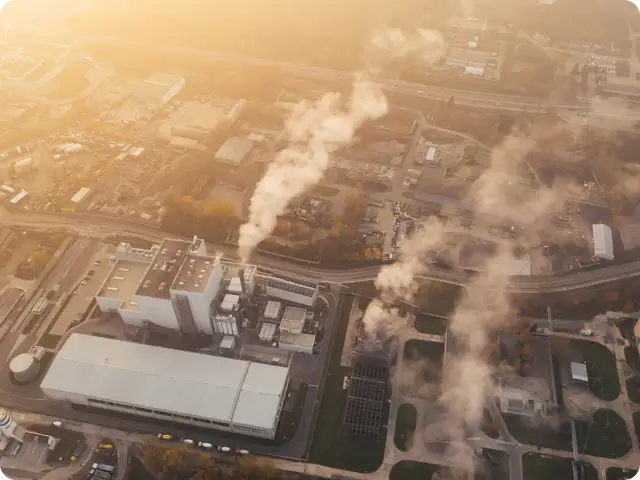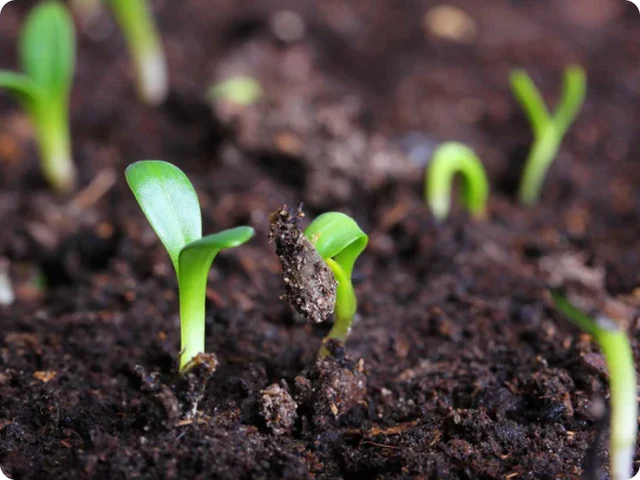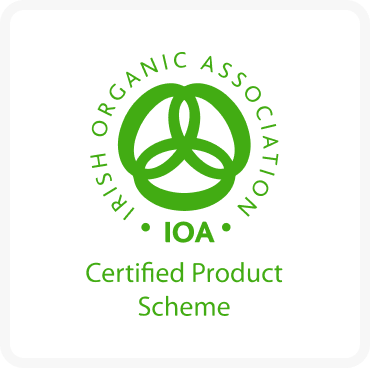Rising populations and significant risks to global food production have put pressure on farmers to use agrichemicals to enhance food production but at what cost?
It is well known that a rising world population and the unpredictable weather patterns associated with climate change pose significant risks to global food production, profoundly impacting agricultural systems and food security around the world. Rising temperatures, changing precipitation patterns, and extreme weather events are making our crops vulnerable to stress and disease, resulting in declining crop yields at a time when more food is needed.
The fertiliser industry has marketed itself as the solution to this emerging food crisis, but the truth is that synthetic fertilisers are just another outlet for the oil and gas companies to maintain their grip on the global market and ensure that we keep polluting our world with fossil fuels.
What Are Synthetic Fertilisers?
Synthetic nitrogen fertilisers are fossil fuels in another form and overwhelming scientific evidence has demonstrated that decades of overuse of these fertilisers in conjunction with pesticides has contributed to toxic pollution and the biodiversity collapse we are now observing. In addition to this, agriculture contributes largely to greenhouse gas emissions and is a major driver of climate change. A study published in 2022 found that nitrogen fertiliser alone contributes roughly 2 percent of all global GHG emissions which is more than that of commercial aviation!
The fertiliser industry has innovated new methods for applying fertiliser to try to minimise some of the environmental impacts they cause, including reducing GHG emissions and the nutrients leached into the environment. One of the most widespread innovations has been the creation of controlled-release fertilisers (CRFs) which are designed to synchronise the release of nutrients in line with the needs of the plant. As a result, CRF has been advertised as environmentally friendly, yet many people are unaware that these fertilisers are polluting our environment with something new and potentially just as dangerous: microplastics.
Introducing Microplastics
Microplastics are tiny pieces of plastic that are smaller than 5 mm which can often make them hard to detect with the naked eye. These plastics are made up of synthetic polymers that do not easily degrade and end up polluting our environment. While there has been a lot of focus on microplastics in the environment, especially in the ocean, there has been less talk about microplastics in the soil and the risk of them ending up in the food we eat because of the use of agrichemicals. You may be familiar with the use of microplastics in everyday products such as cosmetics and detergents but you may not be aware that the agricultural sector uses more microplastics than any other sector.
Microplastic particles can find their way into synthetic fertilisers in one of two ways. The first is in the thin coating that forms a barrier around the CRF granules. This coating enables the nutrients to be released more slowly by providing a protective barrier between the soil and the fertiliser. However, this also intentionally pollutes the environment with plastic which threatens not only the health of the soil but also human health as well. The United Nations’ Food and Agriculture Organization (FAO) estimates that 100,000 tonnes of plastic per year are dumped into the environment from plastic-coated fertilisers alone.
The second way that microplastics are intentionally added to fertilisers is through certain additives, such as anti-caking, anti-dust, or colouring agents. Limited information is publicly available on the use of many of these additives in synthetic fertilisers, however many of these additives could persist in the soil environment for a very long time.
The Ties Between Microplastics & Synthetic Fertiliser
The link between synthetic fertilisers and microplastics in the soil is undeniable. Studies have demonstrated that microplastic concentrations have increased at a faster rate in soils treated with organic or inorganic fertiliser, damaging the soil health by killing off soil microorganism and contributing to greenhouse gas emissions as they degrade. More worryingly, research has shown that depending on their size, microplastics can penetrate edible fruits and vegetables which can result in microplastic uptake in both animals and humans. Microplastics are also turning up in our air and water, and have been found in human blood, tissue and waste. This could potentially lead to a range of health conditions including respiratory disorders like asthma, neurological problems, inflammatory bowel disease, and even cancer. Some scientists have predicted that humans could potentially be consuming up to 80 g of microplastics a day!
The Effects Of Synthetic Fertilisers On Human Health
Along with plastics, fertilisers come with a myriad of other potential dangers to our health. The industry is continually seeking new ways to make fertiliser more appealing to the farming industry including adding urease and nitrification inhibitors to provide protected urea to reduce ammonia emissions. Several studies have investigated the impact of these inhibitors on human health and concluded that there is limited risk but they often fail to account for the other chemicals that are used in their delivery. Fertiliser companies often list additional chemicals as organic solvents, failing to mention the exact composition of their products which leaves us to ask what they could be hiding.
While research suggests that there is no long-term impact of the use of urease inhibitors and nitrification inhibitors on human health, certain regulatory bodies have classified some of these substances as having a potential risk to human health and fertility.
For example, the most commonly used urease inhibitor, N-(n-butyl) thiophosphoric triamide (NBPT), has been classified by the ECHA as having the ability to cause serious eye damage and is suspected of damaging fertility or the unborn child. Nitrogen inhibitors, such as dicyandiamide (DCD), have also been found in high concentrations in surface water suggesting further research is required to understand the long-term impacts of these chemicals on animal and human health, as well as the environment.
The combination of agrichemicals and plastics is also a public health and environmental hazard as the plastic coating on the fertiliser granules can make any chemicals incorporated in the products more toxic. For example, a 2019 study found that encapsulating a common insecticide in plastic made it more toxic than applying the insecticide on its own. This is because the plastic coatings prevent these chemicals and toxins from being broken down by water and diluted and instead enhance their toxicity and mobility which has the potential to make them more dangerous in the environment. Moreover, microplastics can absorb chemicals that have made their way into soil from other sources, such as manure or wastewater used for irrigation. This can increase the toxicity of these chemicals, facilitate transport, and cause them to be taken up by plants and animals.
In September 2023, the EU adopted to restrict microplastics that are intentionally added to products, including fertilisers. However, the industry has several years to phase out its use of microplastics and controlled-release fertilisers will be exempt from the ban as they are covered by the EU Fertilising Products regulation. This means that fertiliser companies can continue polluting our soils with microplastic-filled products that they market as sustainable and environmentally friendly, while their risk to human health and the climate crisis goes unchallenged.

